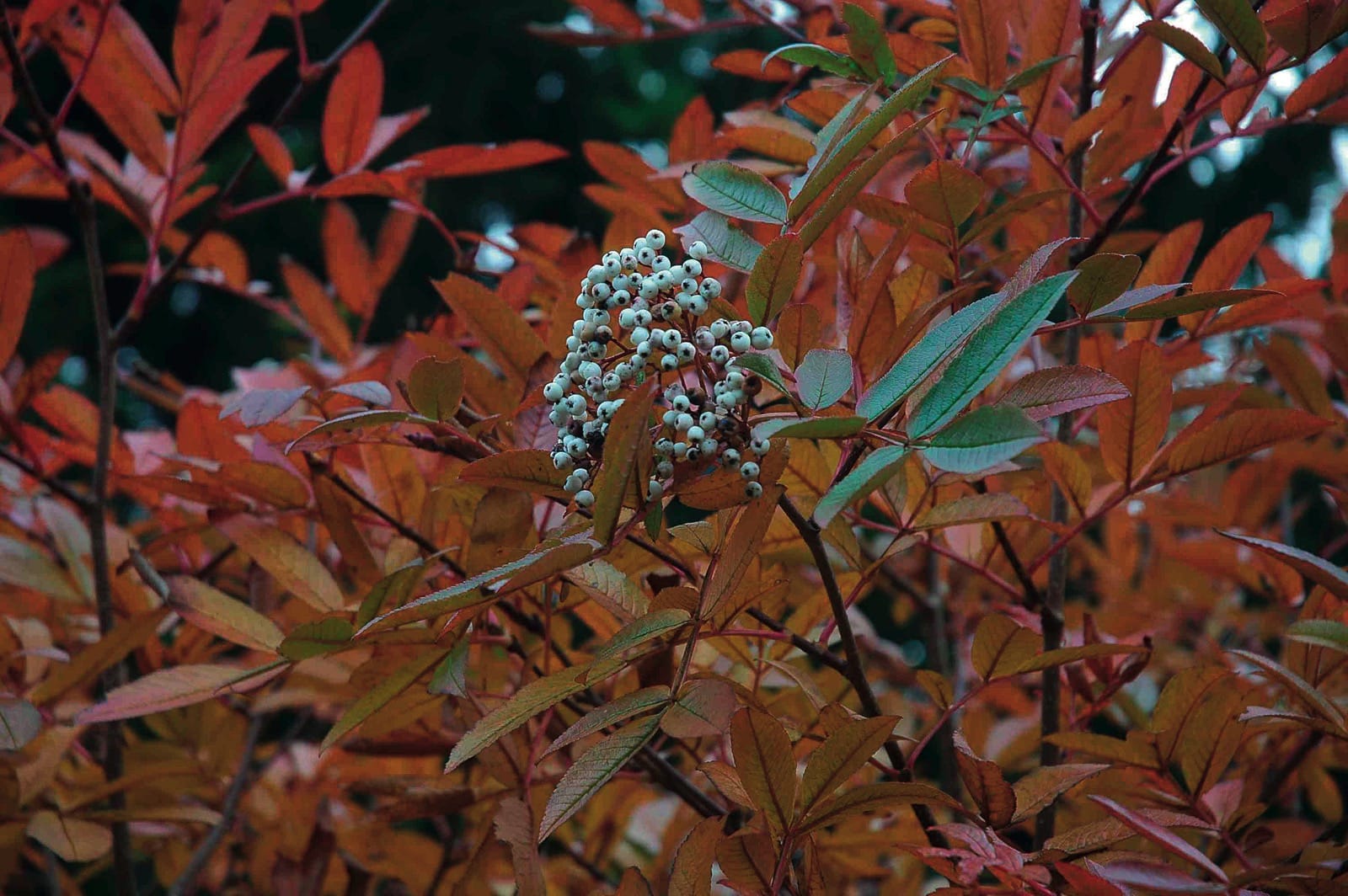Sorbus helenae
Sponsor
Kindly sponsored by
This genus has been sponsored and new text is being prepared.
Credits
Article from New Trees by John Grimshaw & Ross Bayton
Recommended citation
'Sorbus helenae' from the website Trees and Shrubs Online (treesandshrubsonline.
Genus
Other taxa in genus
- Sorbus americana
- Sorbus amoena
- Sorbus arachnoidea
- Sorbus aucuparia
- Sorbus carmesina
- Sorbus cashmiriana
- Sorbus commixta
- Sorbus coxii
- Sorbus decora
- Sorbus discolor
- Sorbus ellipsoidalis
- Sorbus esserteauiana
- Sorbus fansipanensis
- Sorbus foliolosa
- Sorbus forrestii
- Sorbus glabriuscula
- Sorbus glomerulata
- Sorbus gracilis
- Sorbus hupehensis
- Sorbus hypoglauca
- Sorbus insignis
- Sorbus 'Joseph Rock'
- Sorbus khumbuensis
- Sorbus koehneana
- Sorbus kongboensis
- Sorbus kurzii
- Sorbus lingshiensis
- Sorbus matsumurana
- Sorbus microphylla
- Sorbus muliensis
- Sorbus olivacea
- Sorbus parvifructa
- Sorbus pohuashanensis
- Sorbus poteriifolia
- Sorbus prattii
- Sorbus pseudohupehensis
- Sorbus pseudovilmorinii
- Sorbus randaiensis
- Sorbus reducta
- Sorbus rinzenii
- Sorbus rubescens
- Sorbus rufopilosa
- Sorbus rushforthii
- Sorbus sambucifolia
- Sorbus sargentiana
- Sorbus scalaris
- Sorbus sitchensis
- Sorbus tianschanica
- Sorbus ursina
- Sorbus vilmorinii
- Sorbus wallichii
- Sorbus wilsoniana
Tree 3–7(–10) m. Branchlets stout, c.5 mm diameter, with sparse lenticels, glabrous. Buds to 2 cm long, oblong-ovoid, scales green with red and black at apices, glabrous. Leaves to 20 cm long, with two to three pairs of leaflets, the apical pair being the largest. Leaflets leathery, to 9(–11) × 3 cm, upper surface finely rugose with impressed veins, glabrous, lower surface with red-brown pubescence, non papillose, margins finely serrate throughout; stipules dentate, persistent and leafy, 0.7 × 1.1 cm; petiole 2.5–5 cm long, somewhat sheathing at base. Inflorescences to 15 cm across, dense, with branches and pedicels reddish-hairy. Flowers to 0.8 cm diameter, white. Fruit white with pink around calyx lobes, slightly broader than long, to 0.7–0.8 cm diameter; calyx lobes slightly fleshy, carpels five. Sexual diploid (2n = 34). McAllister 2005a. Distribution CHINA: western Sichuan. Habitat Mountain forests. USDA Hardiness Zone 6–7. Conservation status Not evaluated. Illustration NT804.
Sorbus helenae (named after Ernest Wilson’s wife) is very rare in cultivation. The first successful introduction was by Edward Needham, who collected it from the top of Emei Shan (EN 3088). Grafted plants of this have been distributed to several collections by Keith Rushforth (pers. comm. 2008). Another introduction, also from Emei Shan, was made by the Chengdu Edinburgh Expedition of 1991, under the number CEE 308. This is growing happily at Dawyck, making a good bushy individual (there are a few progeny elsewhere). Seen through rainy spectacles it has a suggestion of a Sambucus – this impression contributed principally by the large leaves with their broad leaflets. McAllister (2005a) records that S. helenae has brilliant orange-red autumn colour. It deserves to be more widely grown.

